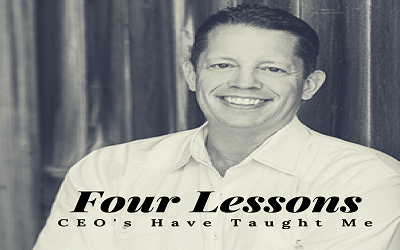Original publication: CEO Magazine
Original Publication date: November 6, 2017
In my role at the Institute for Health and Human Potential, I’ve had the pleasure of meeting many CEO’s. Some are from small companies with 400-500 employees, and some very large companies with over 200,000 employees.
The CEO’s have typically employed me as a keynote speaker to help their team develop leadership skills, so I spend a lot time with them getting their input as to what challenges they and their team are working on overcoming. In addition, the CEO will typically introduce me and set the stage for the training session, so I also get to hear their perspective on why they think the topic of Emotional intelligence is important to the people they lead.
Here are Four Lessons I’ve learned from the CEO’s I’ve worked with:
1) One CEO of a 12,000-person company, who was talking to his senior leadership team about being a leader, said “we are genetically wired to screw this up”. I love that! It’s so true. Leading people, managing conflict, dealing with change and difficult relationships all run counter to what our emotional system wants us to do, which is to take the easy road and avoid the tough things leaders must do.
One of my favorite (and sarcastic) quotes on leadership is: “Leadership is the art of disappointing people at a rate they can stand” John Ortberg, Harvard
Lesson: Leadership is hard, and you are not going to be perfect. All CEO’s I’ve met find it difficult and they make mistakes. It’s how you respond to those mistakes that matter most.
2) Another CEO of a 270,000-person company admitted that he’d been too tolerant of people who get results, but not in a good way (they leave bodies in their wake) and he wants to change the culture of the company, starting with himself and his team. Not only is this bang-on, but it was great to see a CEO admit that he isn’t perfect and that he is working on improving himself too.
Lesson: CEO’s must set the example. As Albert Einstein said, “Leading by example is not the main means of influencing people, it’s the only means”.
3) Then there was the CEO of the 4,000-person company, who when describing what he wanted in a leadership program, said he wanted people to learn the “seven leadership” styles. Only thing is, nobody in the meeting knew what the seven leadership styles were, but everyone was too afraid to ask fearing they would look stupid. It wasn’t until a few weeks later that someone had the courage to ask, and he said. “oh, I didn’t mean any specific program, just that I want people to learn that there are different leadership styles”. i.e. there was no “seven leadership” styles program, he was just using that as an example!
Lesson: CEO’s need to create an environment where people feel safe to share ideas, push back on us and even ask what they think might be a “stupid” question.
4) My final example is a CEO of an 11,000-person company, who after presenting before me, came up to talk to me at the break. I thought he was going to give me some guidance or direction about my programs, but instead he asked me “how did you think I did presenting? Do you think I had my back to the audience too much?”. He went on to probe me to get feedback about all kinds of aspects of his speech! It just goes to show that CEO’s are people too and they wonder how they are doing and what people think.
Lesson: It’s okay for a CEO to be unsure of themselves at times. And it’s even ok to ask people for feedback. In fact, it shows you are authentic, which in our research, is one the leadership qualities people most value.
I am fortunate to meet some amazing people in the work I do, and I can learn from all of them. Even the CEO’s!
P.S. if you live in the Chicago area and want to learn more about our work, we are holding an Executive Briefing from 9:00-11:00 on Dec 1st. More informaiton at: www.ihhp.com/Chicago-executive-briefing/

